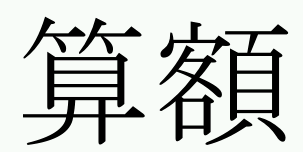

Sangaku (算額) are votive tablets offered in shinto shrines (and sometimes in buddhist temples) in Japan. The earliest sangaku found date back to the beginning of the 17th century (a few years before the beginning of the japanese Edo period).
The problems featured on the sangaku are typical problems of japanese mathematics (wasan 和算) and often involve many circles which is uncommon in western mathematics. These problems can often be seen as amusing mathematic puzzles (such as the modern Sudoku).
| Pictures | Year | Number of figures | Description | Shrine name (location) |
City | Prefecture |
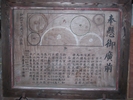 more |
1847 (Koka 4) | 1 | Circles in a rectangle | Hachiman (???) |
Uchiko | Ehime (Shikoku) |
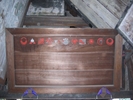 more |
1686 (Jokyo 3) | 11 | An old sangaku in Kyoto | Kitano-tenman-gu (???) |
Kyoto | Kyoto |
 more |
1989 (Heisei 1) | 2x1 | Two small sangaku recently dedicated to the yasui shrine in Kyoto. | Yasui (???) |
Kyoto | Kyoto |
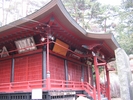 more |
1893 (Meiji 26 ) + 1920 (Taisho 9) | 17 + 0 | A sangaku (or even 2) found in a temple | ??? (???) |
Fukushima | Fukushima |
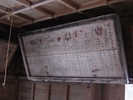 more |
1846 (Koka 3) | 2x7 | Two old sangakus in a shrine Ichi no seki | Hachiman (???) |
Ichi no seki | Miyagi |
In English:
An article about Sangaku published by Princeton University
A website dedicated to japanese mathematics (wasan) with pictures of sangaku.
The website made by the author of the article article published in Scientific american (with a link to the article).
About a sangaku found in Isaniwa.
In French:
Two articles have been published in Tangente.
In Hungarian:
Szabó Péter Gábor has written two articles One
article has been published in Szaku
and the other in
the Hungarian Mathematical Journal. He has gathered some links on his
web page.
In Dutch:
Zsófia Ruttkay wrote two articles in Dutch
here
and here.
In Japanese:
A book about japanese mathematics (wasan) and sangaku.